Architecture
Monolithic Architecture
Monolithic architecture is an approach to software development in which an application is built as a single, self-contained unit. Monolith is a starting point for many web applications.
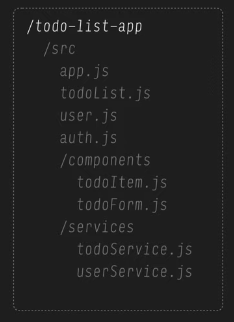
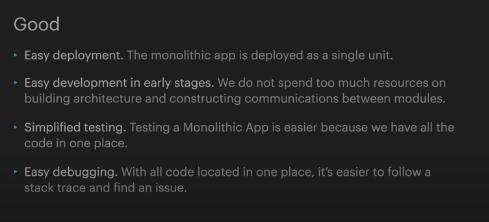
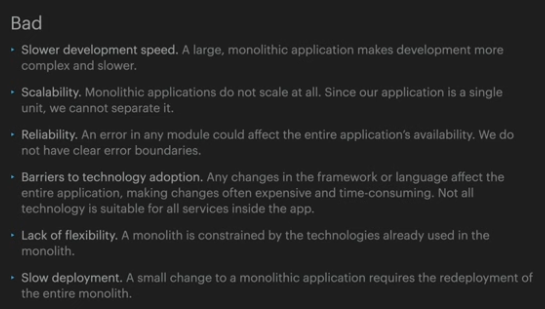
Use cases
- small projects with relatively straightforward requirements.
- prototyping and MVP(Minimum Viable Product) development.
- projects with a small team of maintainers.
Anti use cases
- large-scale enterprise applications with complex and evolving requirements.
- projects where different parts of the application require different technologies or scaling strategies
- projects that many people are working on.
Conclusion
Monolithic architecture is only suitable for small or medium-sized projects.
The main reason why we should drop out of the monolithic approach:
- the team gets bigger
- the application gets bigger
Micro-Frontends
Micro-frontends is an architectural style where independently deliverable frontend applications are composed into a greater whole.
-
With a Monolith App. scaling becomes challenging as the number of services and team members increases.
-
separating responsibilities among team members becomes necessary. This separation also leads to a more flexible deployment process, allowing for faster deployment and more frequent feature delivery.
-
ultimately, adopting the idea of maintaining code for different services in separate repositories transitions us from a Monolithic App to Micro-frontends.
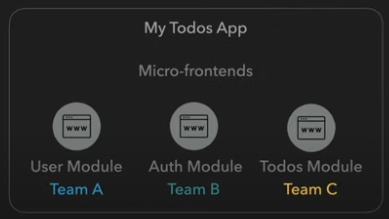
Clear boundaries
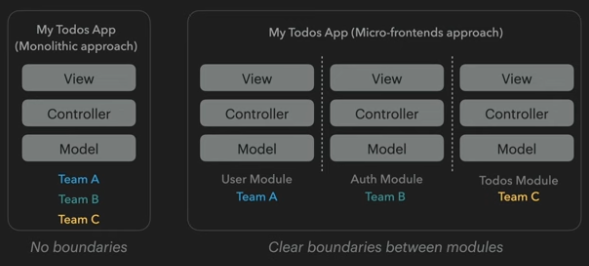
Vertical Slices vs Horizontal Slices
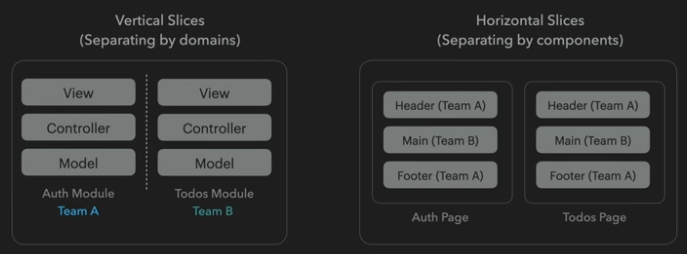
What is better?
Horizontal slices (separation by components)
- better suited for projects containing many almost identical pages, like e-commerce sites, catalogs (e.g. Amazon).
Vertical slices (separation by pages/domains)
- better suited for web applications. A web application usually contains a limited number of pages, each responsible for a single domain. We can easily split such a project by domain-slices. Examples of web applications: Google Calendar, Skype, Figma.
Good
- incremental upgrades.
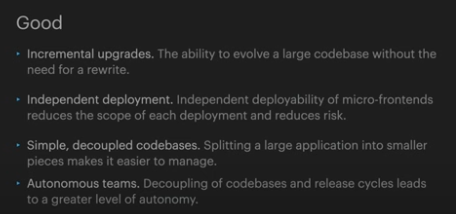
Bad
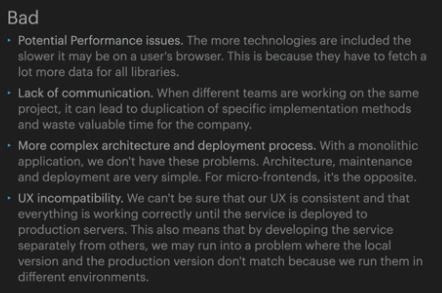
Key points
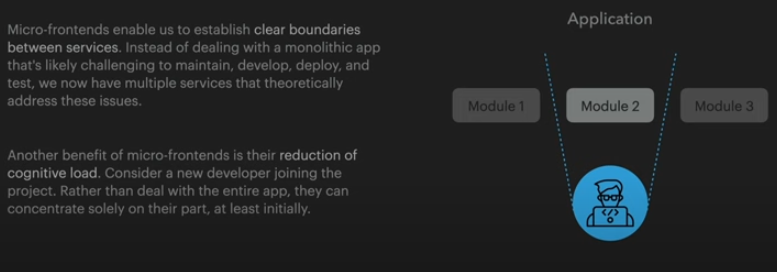
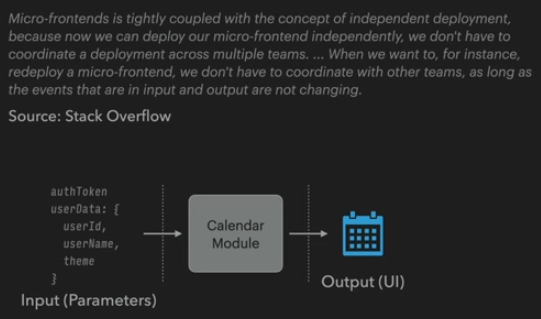
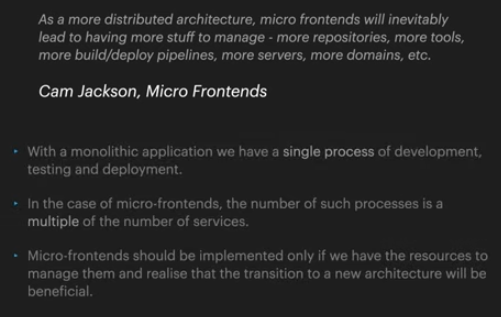
Use cases
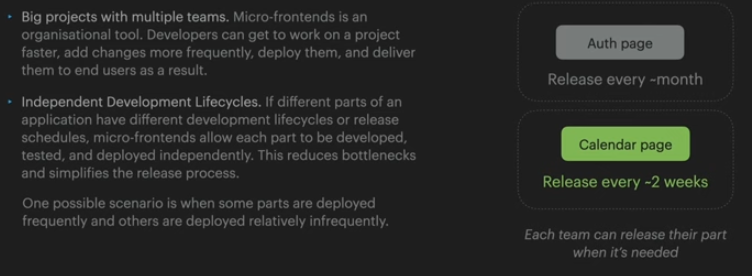
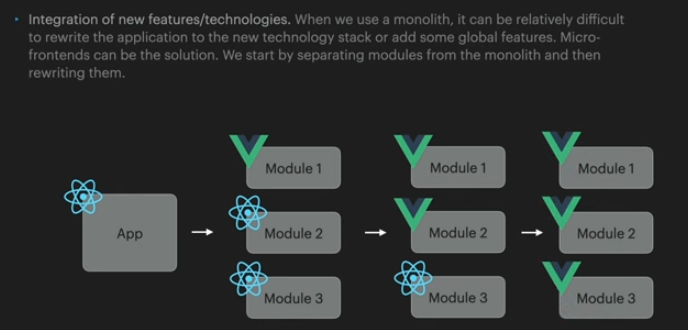
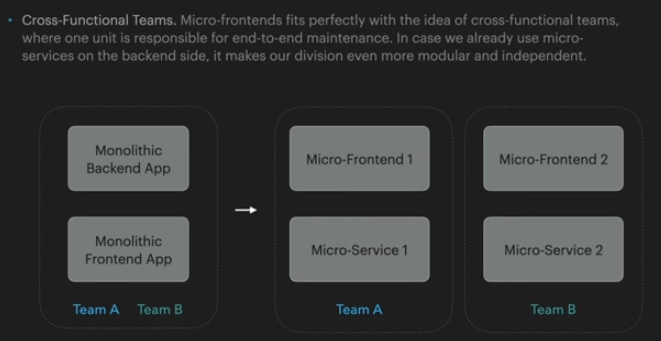
Anti use cases
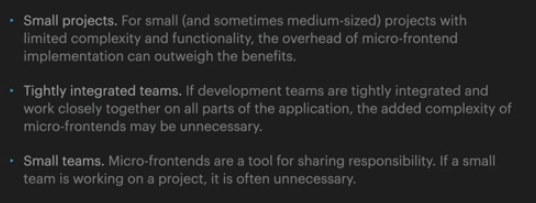
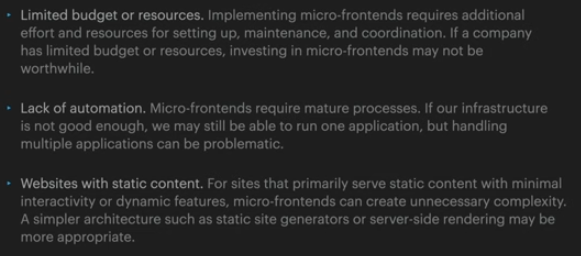
Key points

Implementation
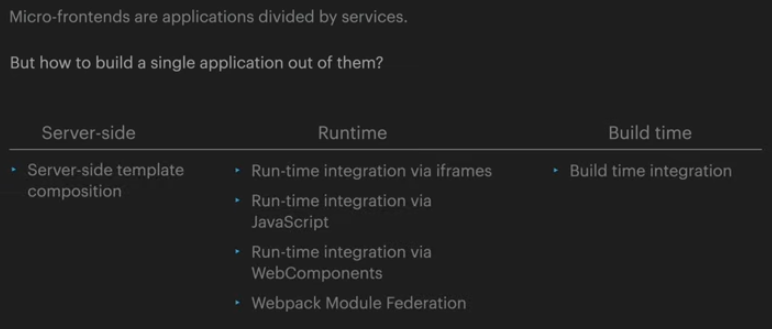
Server Side Template Composition
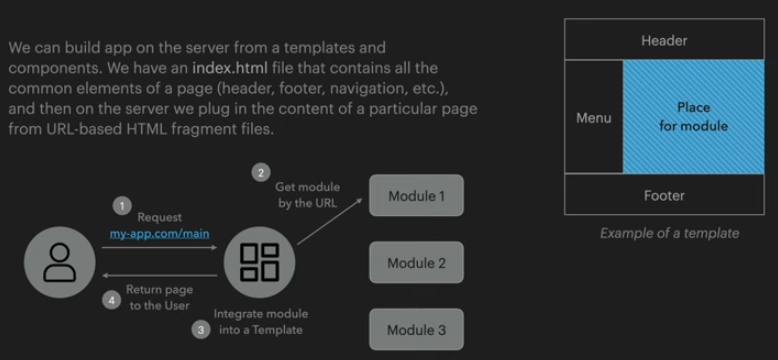
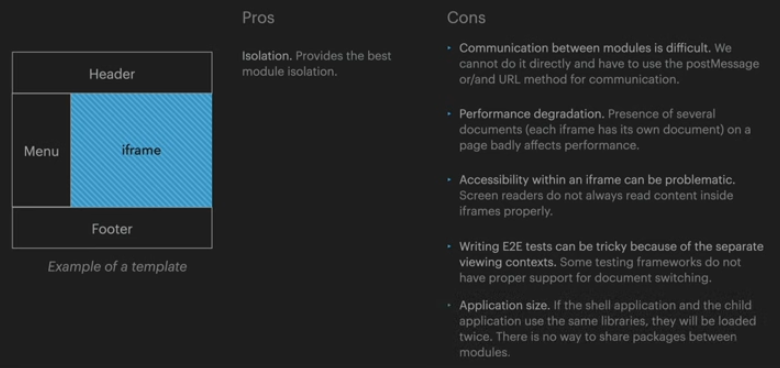
Run time integration
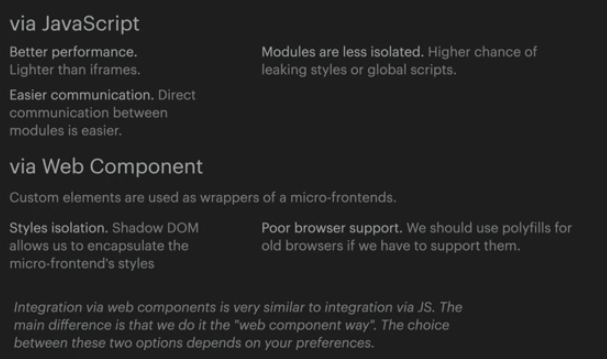
Run time integration via Webpack Module Federation
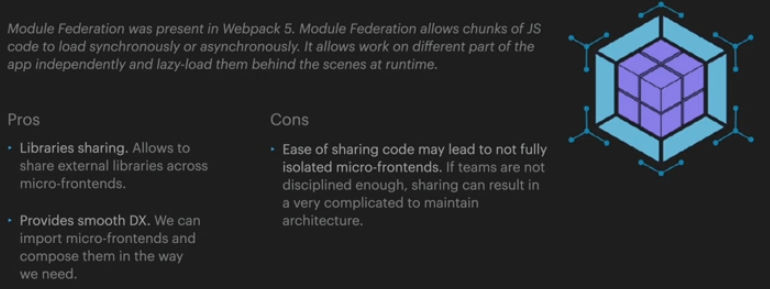
Build time integration
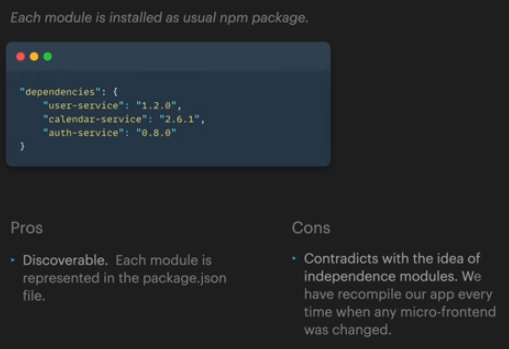
Implementation Summary
-
We do not use build-time integration because of the need to recompile the application every time, which contradicts the idea of Micro-Frontend independence.
-
We use service-side template composition when our site is already using server-side rendering (e.g. e-commerce sites).

Modular Monolith
To be continue at 34.00 - Modular Monolith https://www.youtube.com/watch?v=2qtgegNSUoE